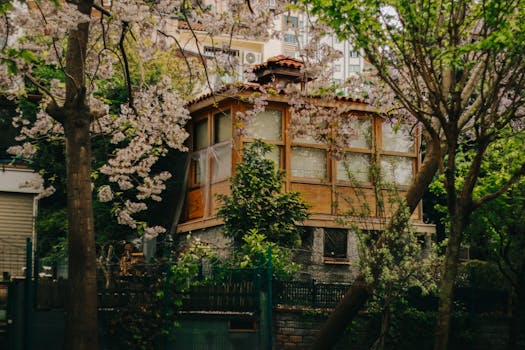
Urban Green Spaces: The Future of Outdoor Living in European Cities by 2025
Urban Green Spaces are becoming increasingly important in European cities as they provide a sustainable and healthy environment for citizens to live and thrive. With the focus on Urban Green Spaces, European cities are transforming their outdoor spaces to promote biodiversity, reduce pollution, and enhance the overall quality of life.
Introduction to Urban Green Spaces
Urban Green Spaces refer to parks, gardens, and other green areas in urban environments that provide a range of benefits, including air purification, noise reduction, and climate regulation. These spaces also serve as habitats for wildlife, support urban food production, and offer recreational areas for citizens.
Benefits of Urban Green Spaces
The benefits of Urban Green Spaces are numerous and well-documented. Some of the most significant advantages include:
- Improved air quality: Urban Green Spaces help to remove pollutants from the air, improving the overall air quality and public health.
- Reduced noise pollution: Green spaces can act as a buffer, reducing noise pollution and creating a more peaceful environment.
- Climate regulation: Urban Green Spaces help to regulate the urban microclimate, reducing the urban heat island effect and mitigating the impacts of climate change.
- Increased biodiversity: Green spaces provide habitats for a wide range of plant and animal species, supporting urban biodiversity and ecosystem services.
- Enhanced mental health: Spending time in Urban Green Spaces has been shown to have a positive impact on mental health and wellbeing.
European Cities Leading the Way
Many European cities are leading the way in the development of Urban Green Spaces. Some examples include:
- Stockholm, Sweden: The city has implemented a range of green infrastructure initiatives, including green roofs, green walls, and urban parks.
- Copenhagen, Denmark: The city has a strong focus on sustainable urban planning, with a range of green spaces and parks throughout the city.
- Amsterdam, Netherlands: The city has a long history of innovative urban planning, with a range of green spaces and canals that support biodiversity and ecosystem services.
Challenges and Opportunities
Despite the many benefits of Urban Green Spaces, there are also challenges and opportunities that need to be addressed. Some of the key challenges include:
- Space constraints: Many European cities are densely populated, making it challenging to find space for Urban Green Spaces.
- Funding: Implementing and maintaining Urban Green Spaces can be costly, requiring significant investment from cities and governments.
- Community engagement: Engaging local communities in the planning and management of Urban Green Spaces is crucial to ensure their success and sustainability.
However, these challenges also present opportunities for innovation and creativity. Some potential solutions include:
- Innovative urban design: Using green infrastructure and urban planning to create multi-functional green spaces that support a range of ecosystem services.
- Community-led initiatives: Empowering local communities to take ownership of Urban Green Spaces, through volunteer programs, community gardens, and other initiatives.
- Public-private partnerships: Collaborating with private sector organizations to secure funding and expertise for Urban Green Space development and maintenance.
Conclusion
In conclusion, Urban Green Spaces are a critical component of sustainable and healthy European cities. By 2025, we can expect to see even more innovative and effective Urban Green Spaces in European cities, supporting biodiversity, reducing pollution, and enhancing the overall quality of life for citizens.






